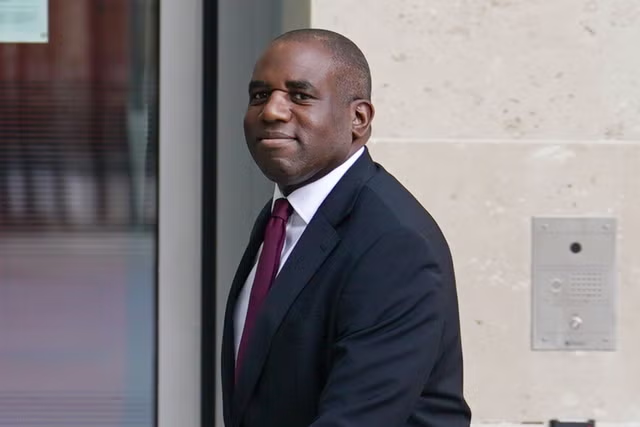Today, Oxfam launched a report which analysis the comparison on the recent droughts that hits the horn of Africa (Somalia/land, Ethiopia, Kenya). The report is highlighting the status of funding and implication if not acted quickly. There is also press release alongside the report which emphasises Oxfam’s standpoint of the current drought crisis in the horn.
Oxfam:15 million people need humanitarian aid as drought hits parts of Ethiopia, Kenya and Somalia
The following statement was issued today by OXFAM.
More than 15 million people are in need of aid as drought hits parts of Ethiopia, Kenya and Somalia again. Yet lessons from the devastating droughts of 2011 and 2017 are being ignored, putting lives at risk, warned Oxfam today.
The international agency is calling on governments to support the aid effort which is currently just over a third funded, making it difficult to help all those who need it and prevent an even greater humanitarian crisis.
Consecutive poor rains have destroyed crops and the means to earn a living, and eroded people’s ability to cope leaving 7.6 million people across the three countries in severe hunger. The crisis is compounded as millions of people have been forced to flee their homes in the region due to conflict and the effects of drought.
Lessons learned from the 2011 famine, which killed over 260,000 people, helped avert a famine in 2017 with large scale, swift funding ensuring an effective humanitarian response.
Millions of people are still recovering from the 2017 drought, which left them even more vulnerable to the impact of the current drought. However, at the same stage two years ago the humanitarian response was three-quarters funded.
Lydia Zigomo, Oxfam’s Regional Director for the Horn of Africa, said:
“We learned from the collective failures of the 2011 famine that we must respond swiftly and decisively to save lives. But the international commitment to ensure that it never happens again is turning to complacency. Once again it is the poorest and most vulnerable who are bearing the brunt.
“We cannot wait until images of malnourished people and dead animals fill our television screens. We need to act now to avert disaster.”
The serious international shortfalls contrast with a more proactive response from the governments of the three countries: the Kenyan government is leading its drought response with minimal international funding; Ethiopia is paying nearly half the bill of all humanitarian activities in the country; Somalia has also significantly improved security and humanitarian access. But each country must expand these efforts and without more international support they will not be able to avert a greater crisis.
Jama, a Somali displaced since the drought two years ago, fears an even worse outcome this time around:
“We lost all of our livestock in 2017. If there are no solutions and the situation doesn’t improve, we will lose everyone here. I’m afraid of losing people.”
Halima Adan, Deputy Director with Oxfam partner organisation, Save Somali Women and Children, said:
“We are face-to-face with this crisis every day and scraping together all possible resources to ensure the best possible response. This means maximising direct funding to local humanitarians, embedded in communities and who are nearly always the first responders in any crisis. Without enough funds and the right kind of support, our hands are tied.”
A climate crisis spiralling out of control has made drought the new norm in the region and is a reflection of global inequalities where vulnerable communities, who have done least to create the climate crisis, face its most devastating impacts. The immediate humanitarian response must be matched with genuine commitment to addressing systemic causes of the crisis.
Oxfam and its partners are currently helping hundreds of thousands of people with life-saving support in Ethiopia, Kenya and Somalia by providing clean water and rapid flexible cash assistance, matched with longer-term support to build stronger, more resilient communities.
– Ends –
For press queries, contact: Emma Fabian, Oxfam Press Officer, efabian1@oxfam.org.uk, 07825 503 274
Notes to Editors
- Full report is available.
- Photos of people affected by the drought in Somaliland as well as Oxfam’s work there: https://wordsandpictures.oxfam.org.uk/?c=37883&k=8b48af58a9
- B-Roll footage showing the realities of the drought in the Horn, where pasture is often non-existent, communities struggle to meet basic water needs and forced movement is prevalent. Filmed in Somaliland, in the eastern regions of Sool and Sanaag: https://oxfam.app.box.com/s/o8enf7i2ht0jmhb4ttwjdlq275v7hy60
- 15.3 million people require humanitarian assistance and 5.6 million people are displaced. Funding of Ethiopia and Somalia’s Humanitarian Response Plans are collectively only 35.4% funded. The funding gap to December 2019 is US$1.5 billion.
- Numbers of people in need in the three countries for 2019 Horn of Africa drought:
Number of people in need of humanitarian assistance in Horn of Africa: 15.3 million
Ethiopia: 8.3 million
Somalia: 5.4 million
Kenya: 1.6 million
Number of people experiencing acute or severe hunger due to the drought: 7.6 million
Ethiopia – drought-impacted southeast: 3.8 million
Somalia: 2.2 million
Kenya: 1.6 million
- Oxfam is providing clean safe water through by truck and solar-powered boreholes, latrines for good sanitation and hygiene as well as cash assistance for affected families to buy food and other necessities. In Somalia, we use desalination units in communities to reduce salt levels in water and make it fit for human and animal consumption. For the pastoralists, we provide emergency fodder as well as animal vaccinations





















![New PM Starmer names first cabinet after landslide win British Prime Minister Keir Starmer looks on, at Number 10 Downing Street, following the results of the election, in London, UK, July 5, 2024 [Kevin Coombs/Reuters]](https://i0.wp.com/www.horndiplomat.com/wp-content/uploads/2024/07/2024-07-05T115520Z_52034812_RC2ZO8AP0G9J_RTRMADP_3_BRITAIN-ELECTION-1720202222.webp?resize=100%2C70&ssl=1)







